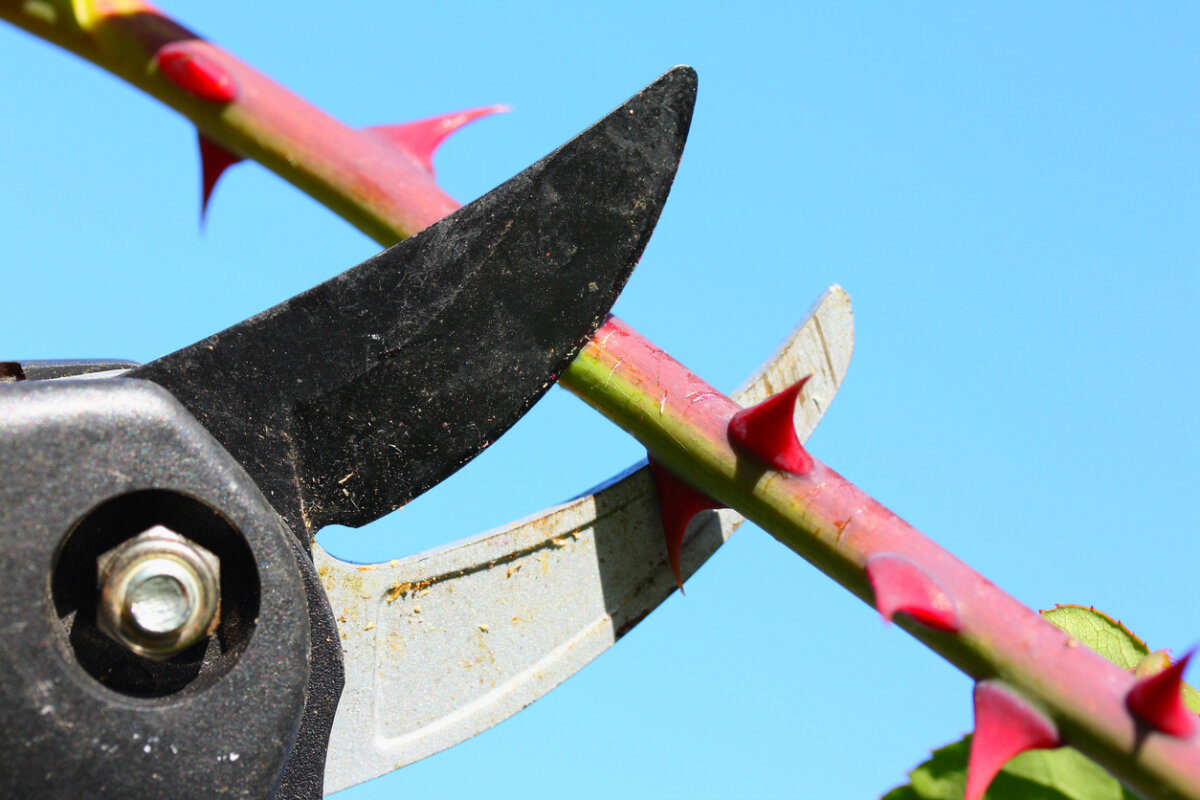
Now is a great time to prune roses. Cut canes at a 45-degree angle just above an outward-facing bud.
The best time to prune roses in the Seattle area is late February through early March. You don’t want to do it too early in the season because pruning encourages new growth. “Pruning earlier than that risks the new growth getting killed off by bad weather, potentially inviting disease,” said Kym Pokorny in the Seattle Times. So now is a great time to get out your pruning tools.
Roses require and respond well to proper pruning. “Pruning a must-do job for spring,” said OSU Extension Service. “Your plants will reward you with beautiful blooms and vigorous health that helps ward off disease.”
Why prune your roses?
- Open up the rose bush to encourage airflow. This will help keep diseases, such as black spot, rust and powdery mildew, at bay.
- Remove dead or diseased canes or stalks, helping maintain the plant’s health.
- Encourage new growth and flowers throughout the growing season.
How to prune roses
Gather your tools
Bypass hand pruners are most useful. You may also use bypass loppers or a pruning saw for thicker stems. Sharp tools will make cleaner cuts, so sharpen your tools before you start. Here is a short video from Fraser Valley Rose Farm about how to sharpen pruners.
Clean your pruning tools periodically as you work. This will prevent you from spreading disease from one cane or plant to another. One of the easiest ways to sanitize pruning tools is to use ethanol or isopropyl alcohol. Just wipe or dip the tool into the alcohol. You don’t need to soak it.
Gloves, especially long leather gloves, are useful for extra protection when working around roses and their thorns. Tough shirts and jeans are also helpful.
Pruning steps

Roses require and respond well to regular pruning. OSU Extension.
First, remove the three Ds: all damaged, dead and diseased canes. “How do you know it’s dead?” asked Linda Hagen in Garden Design. “Cut into it—brown is dead, green wood is living. Cut any dead wood back to the base.”
Make clean cuts at a 45-degree angle just above an outward-facing bud. This will direct new growth away from the center of the plant. If you hit dead wood, try again further down on the cane.
Prune to open the center of the bush for maximum air circulation. Choose between three and six strong basal canes from last year’s growth to keep. Remove all the rest of the growth, then prune back the selected canes. A good rule of thumb is to leave no wood on the rose bush that is thinner than a pencil.
“Hybrid tea and grandiflora roses should be pruned to 12-18 inches,” said Kym Pokorny in the Seattle Times. “Floribunda roses should be pruned to 24-36 inches.” Read more from Colorado State Extension about pruning different types of roses.
Remove any suckers, or unwanted growth coming from the rootstock below the graft or bud union. These look different from the rest of the canes. They will reduce the health and hardiness of the plant. Follow the sucker below the soil, and cut it as close to the connection point as possible. “If you just cut soil level, it will just encourage more sucker growth,” said Colorado State Extension. Continue to remove suckers as they sprout throughout the growing season.
After pruning, clean up the cuttings and feed your roses with an organic fertilizer. Read more about how to fertilize roses in Garden Design.
Then look forward to a summer of beautiful blooms!
More information
Videos can be a great way to learn how to prune. Plant Amnesty has a YouTube playlist (five short videos) on rose pruning. We highly recommend their informative and entertaining videos.
Check out our (very popular) blog posts on roses.
- Tips for growing roses in western Washington
- Best roses for the Pacific Northwest
- Tips for managing powdery mildew
We do not offer rose pruning services, but our natural tree and shrub care services will help keep your roses, and other shrubs and trees, healthy throughout the growing season.

What is the best time frame to move a much established rose plant?
The squirrels are digging divets in my lawn is there anything I can do?
It is always better to move established plants when they are dormant, such as late fall, winter or early spring. We often recommend moving plants in fall. The cooler, wetter weather helps them get established. If you move plants in late spring or summer, you will need to make sure they get enough water throughout the growing season.
The squirrels might be digging at chafer beetles. Read our latest blog post on chafer beetles. If they have invaded your lawn, building the lawn’s health will help it survive damage. Watering and fertilizing are really important. https://inharmony.com/aerate-build-lawn-health-to-prevent-chafer-beetles/